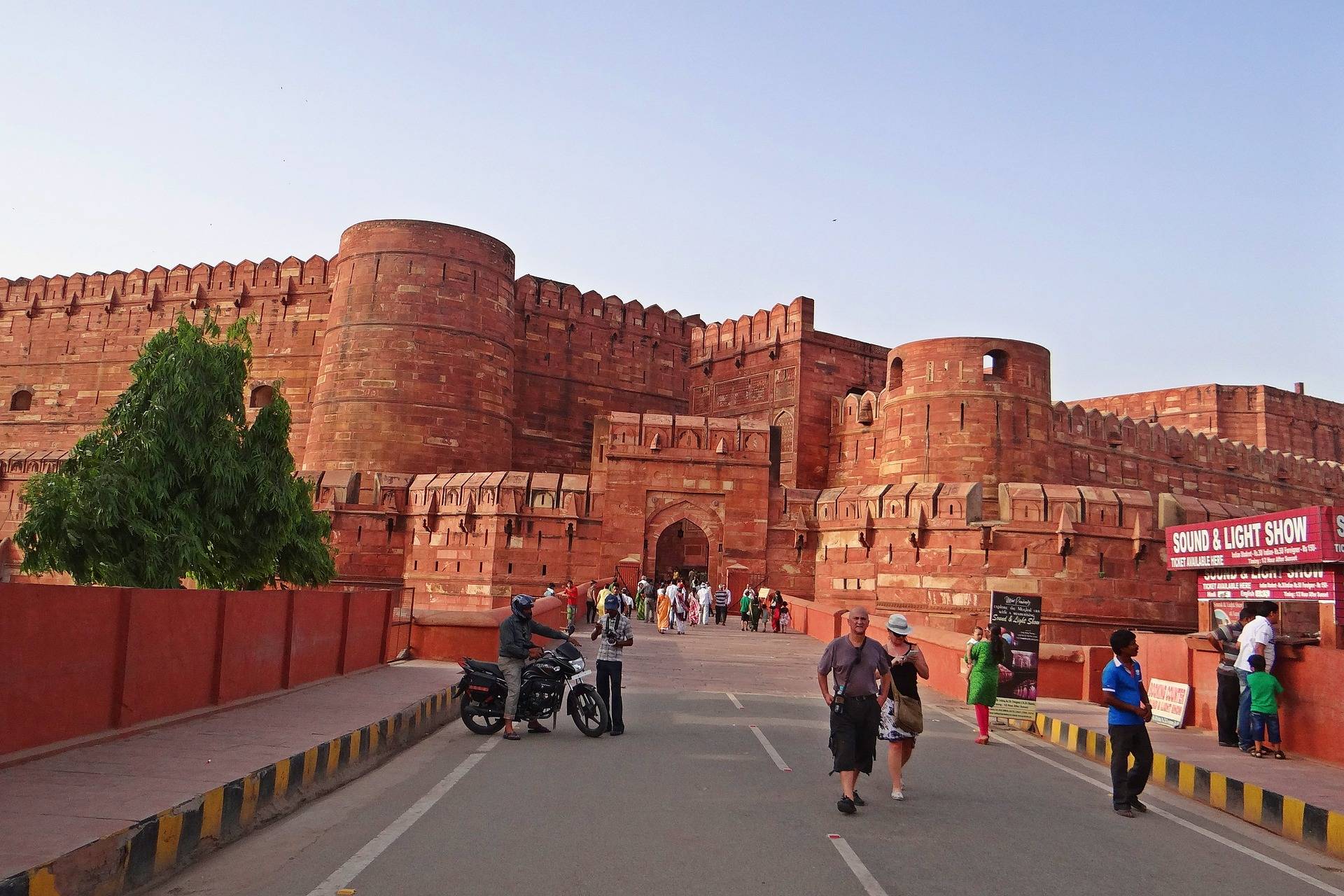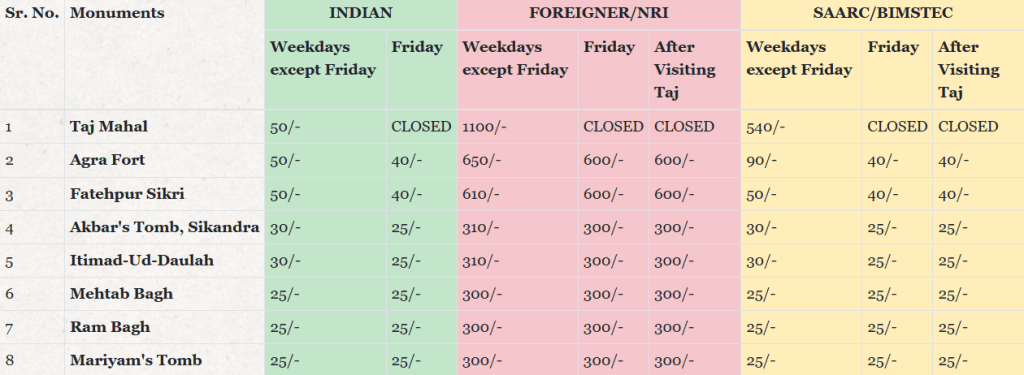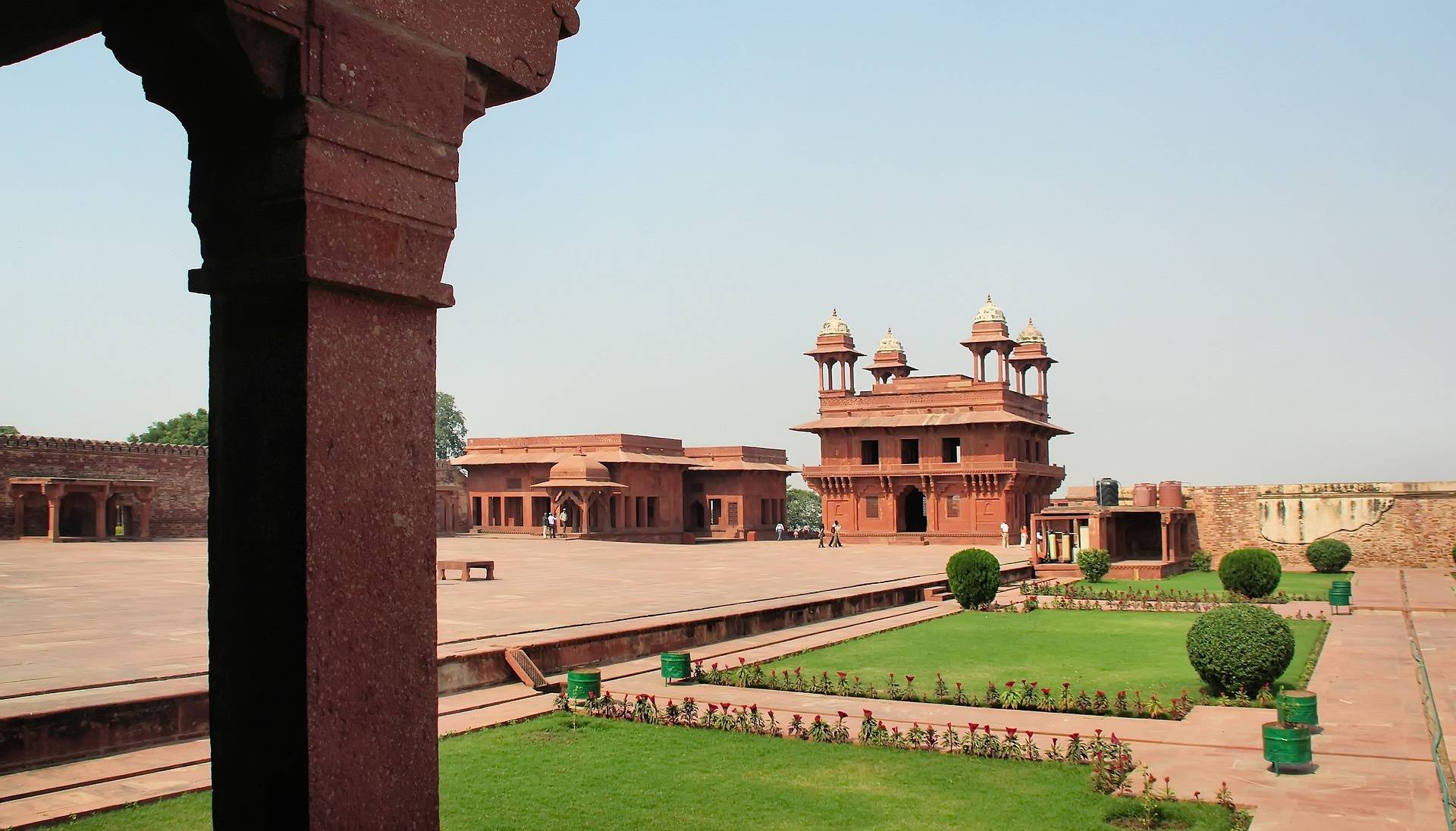Agra, a city synonymous with the grandeur of the Mughal Empire, is home to some of the most iconic monuments in Indian history. The Mughals, known for their architectural brilliance, established Agra as a prominent center of culture and architecture during their rule. This article explores the major monuments built by the Mughals in Agra, offering detailed insights into their history, significance, and visiting hours.
1. Taj Mahal
- Overview: Commissioned by Emperor Shah Jahan in 1632 in memory of his beloved wife Mumtaz Mahal, the Taj Mahal is a UNESCO World Heritage Site and one of the Seven Wonders of the World. Built entirely of white marble, it is renowned for its intricate inlay work and symmetrical gardens.
- Architectural Highlights: The central dome, minarets, intricate pietra dura work, calligraphy, and reflection pools make it a masterpiece of Mughal architecture.
- Opening and Closing Timings: Open daily from 6:00 AM to 6:30 PM (closed on Fridays for prayers). Night viewing is available on full moon nights and two days before and after the full moon (8:30 PM to 12:30 AM).
- Entry Fees:
- Indian Nationals: INR-50
- Foreign Nationals: INR-1,100
- Children (below 15 years): Free
2. Agra Fort

- Overview: Built by Emperor Akbar in 1565, Agra Fort served as the main residence of the Mughal emperors until 1638. It is a UNESCO World Heritage Site and a fine example of Mughal military architecture.
- Architectural Highlights: The fort is made of red sandstone and houses numerous structures like the Jahangir Mahal, Khas Mahal, Diwan-i-Khas, and Diwan-i-Am. The fort’s massive gates and walls reflect its strategic importance.
- Opening and Closing Timings: Open daily from 6:00 AM to 6:00 PM.
- Entry Fees:
- Indian Nationals: INR-50
- Foreign Nationals: INR-650
- Children (below 15 years): Free

3. Itimad-ud-Daulah’s Tomb
- Overview: Often referred to as the “Baby Taj,” this tomb was built by Empress Nur Jahan for her father, Mirza Ghiyas Beg, in 1628. It is considered a precursor to the Taj Mahal due to its intricate marble work.
- Architectural Highlights: The tomb is made of white marble and features detailed lattice screens, floral motifs, and intricate pietra dura work.
- Opening and Closing Timings: Open daily from 6:00 AM to 6:00 PM.
- Entry Fees:
- Indian Nationals: INR-30
- Foreign Nationals: INR-300
- Children (below 15 years): Free
4. Fatehpur Sikri
- Overview: Situated near Agra, Fatehpur Sikri was built by Emperor Akbar in 1571 as his capital. However, it was abandoned after 15 years due to water scarcity. It is now a UNESCO World Heritage Site.
- Architectural Highlights: Key attractions include Buland Darwaza, Panch Mahal, Diwan-i-Khas, Diwan-i-Am, and the Jama Masjid.
- Opening and Closing Timings: Open daily from sunrise to sunset.
- Entry Fees:
- Indian Nationals: INR-50
- Foreign Nationals: INR-610
- Children (below 15 years): Free

5. Akbar’s Tomb (Sikandra)
- Overview: Located in Sikandra, this tomb was commissioned by Akbar himself and completed by his son Jahangir in 1613. It is a perfect blend of Hindu and Islamic architectural styles.
- Architectural Highlights: The tomb features stunning inlay work, ornamental gates, and lush gardens inspired by Persian design.
- Opening and Closing Timings: Open daily from 6:00 AM to 6:00 PM.
- Entry Fees:
- Indian Nationals: INR-30
- Foreign Nationals: INR-310
- Children (below 15 years): Free
6. Mehtab Bagh
- Overview: Built by Emperor Babur, this garden is located across the Yamuna River from the Taj Mahal. It was designed as an integral part of the Taj complex and offers a stunning view of the monument.
- Architectural Highlights: The garden features charbagh-style landscaping with symmetrical pathways, fountains, and pavilions.
- Opening and Closing Timings: Open daily from 6:00 AM to 6:00 PM.
- Entry Fees:
- Indian Nationals: INR-25
- Foreign Nationals: INR-300
- Children (below 15 years): Free
7. Jama Masjid
- Overview: Built by Emperor Shah Jahan in 1648, this mosque is located near Agra Fort and is one of the largest mosques in India.
- Architectural Highlights: The mosque features red sandstone and marble work, with intricate carvings and calligraphy.
- Opening and Closing Timings: Open daily from sunrise to sunset.
- Entry Fees: Free entry.
Conclusion
Agra’s Mughal monuments are a testament to the empire’s architectural prowess and cultural heritage. Each monument has a unique story to tell, reflecting the grandeur and vision of the Mughal emperors. Visitors to Agra can immerse themselves in the city’s rich history while marveling at these timeless structures. Ensure to check the timings and plan your visit to make the most of your experience.

